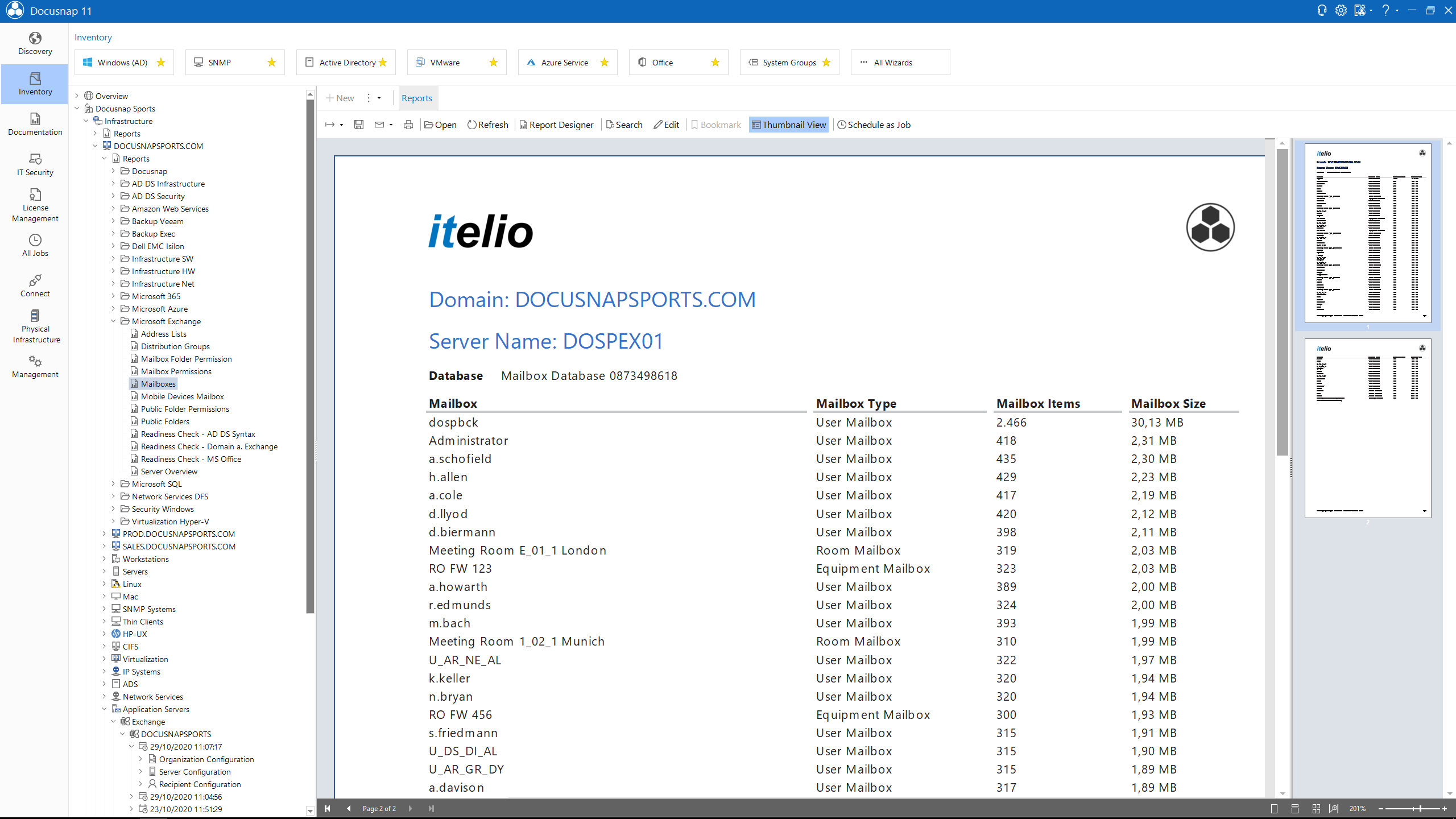Last updated: November 10, 2020
What distinguishes a successful IT service provider (MSP) from an unsuccessful one?
A bad MSP sells a service, software or hardware to a customer, is happy about the turnover and waits for the next order.
A successful IT service provider, on the other hand, is not satisfied with this one-time turnover. He regularly checks whether the customer’s IT is still up to date: Are there any security-relevant updates? Do new solutions exist that offer the customer added value? He actively communicates these findings to the customer. In this way he builds up a relationship with the customer because he feels he is “in good hands” and at the same time the MSP uses the aftersales potential and generates follow-up orders.
Docusnap automatically and recurrently inventories customer IT
The potential here is enormous. However, it also involves a great deal of manual effort to keep the information about the customer’s IT up to date. The service technician has to visit the customer regularly to view the current configurations and installations or have them sent to him by the customer. Docusnap helps by enabling the MSP to remotely check customer networks using Docusnap Discovery Service. Docusnap automatically and recurrently inventories and provides the results centrally in the form of reports and visualizations.
Check Exchange Server configuration and timeliness
Exchange servers are a topic with great aftersales potential. Once they are stable, they are often not touched anymore for fear of failure. This aging of the installation poses a great danger, because in some cases important security updates are not installed.
The compact Exchange Server Report in Docusnap displays the most important data in compressed form and thus enables easy verification:
Installed Operating System
Is the operating system still up to date? Note that support for Microsoft Server 2008 R2 expires in January 2020!
The threats posed by outdated operating systems have already been addressed in the blog article No fear of security holes due to outdated OS.
Exchange Service Pack Version
A service pack that is as up-to-date as possible should always be installed in order to close known security gaps. A comparison of the service pack version with the list on Frank Carius’s Microsoft Exchange FAQ website (only available in German) allows you to check how old the update is.
Server Type
Is it a virtual server or a physical server?
RAM
If the customer complains that the server is slow, this may be due to the fact that the installed RAM is too small.
Architecture
Does the Exchange Server already run on a 64-bit architecture or still on 32-bit?
Number and Size of Databases
Microsoft offers five standard databases. Are these also in use? This can be used, for example, to limit the effects of failures or updates.
Largest Mailboxes
A list of the five largest mailboxes shows whether some employees misuse the mailboxes as cloud storage or archive. Then it might make sense to offer an alternative solution for these purposes.
The Docusnap Exchange Server Report provides quick answers to the most urgent questions.
That’s Docusnap:

